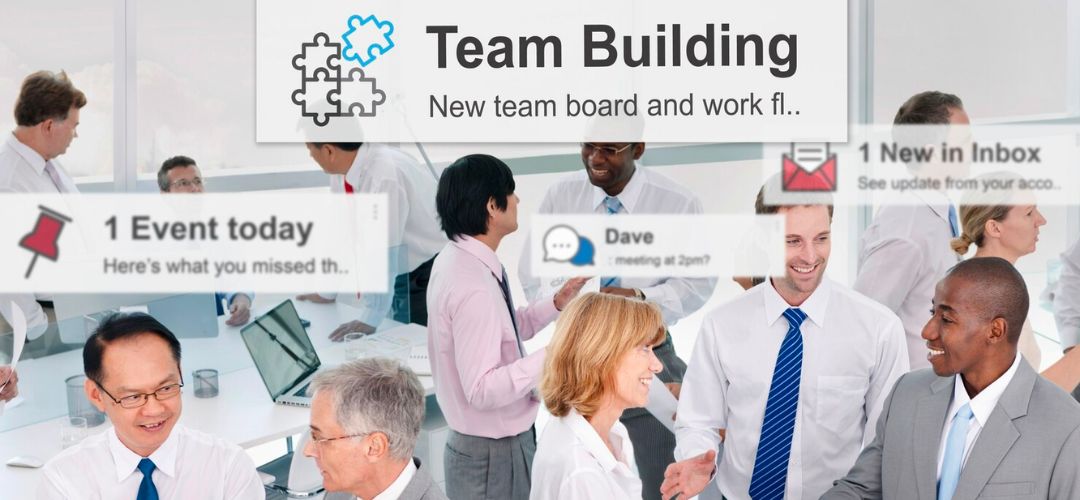Many enterprises underestimate the importance of their human assets or workforce. It requires competent employees to unlock the benefits offered by technology advances. Also, customer satisfaction depends on the commitment of the workforce.
One of the key mantras for success is keeping the workforce engaged. Employee engagement relates to the commitment shown by the employee to the enterprise. Engaged employees involve themselves in work and are enthusiastic about the company. They remain motivated and work at their productive best. Disengaged workers feel no genuine connection to their jobs. They rarely take any initiative.
Promoting employee engagement is a critical driver of success today. Engaged employees are more productive and innovative. Their work output improves enterprise performance, delights customers, and enhances stakeholder value. As a spin-off benefit, committed employees have a low turnover. The enterprise always has experienced talent on its rolls.
Construction-equipment maker Caterpillar’s saved $8.8 million a year by improving employee engagement. The savings came from reduced absenteeism, decreased attrition, lesser overtime, and increased profits. The spin-off benefit was a 34% increase in highly satisfied customers.
But despite such positives, most enterprises have very poor employee engagement rates. Gallup estimates only one in three American workers remain engaged in their jobs. More than half of the employees in an average enterprise “just show up” for work. 17% of the employees are “actively disengaged.”
Here are three broad ways to improve workforce engagement.
1. Empower and facilitate employees
Empowered employees are more committed and more engaged in their work. As time-tested management theories such as Maslow’s hierarchy of needs show, money is not enough as a motivator. Most employees seek higher-level motivations, such as esteem and self-actualization. Empowering employees to realize such goals often requires a redesign of enterprise systems and a cultural shift.
- Allow employees to make decisions within their span of work. Entrust them with ownership of processes they control. Employees who have the freedom to make work decisions put in their best effort.
- Facilitate the employee. Equip employees with the right tools. For instance, equip the field agent with a field management suite to update about job assignments and client information.
- Enrich jobs. Make sure the job description has meaning and variety. Ensure employees understand how their tasks contribute to the company’s objectives. When employees do meaningful work, they become more involved and engaged.
- Cultivate a learning organization. Most engaged employees are self-motivated knowledge workers. They seek professional development and growth while doing their jobs. Make sure the job offers them opportunities to explore and apply new concepts. Also, ensure enterprise systems are transparent and encourage open sharing of information. But ensure strong data governance to prevent leakage of sensitive data.
- Offer structured growth opportunities. Training and development go beyond bridging skill gaps and setting the team up for success. Such interventions promote a culture of trust and accountability.

2. Have proactive HR policies
In most enterprises, functional managers and departments are hard-pressed to manage their domains. The onus is on HR to engage with the workforce and promote workforce engagement.
- Hire for a cultural fit. As the adage goes, “well begun is half-done.” Do not focus on the technical skills alone when making hiring decisions. Employees who do not fit with the enterprise culture will soon leave, anyway.
- Post-hire, communicate company values to recruits with clarity. Set expectations for the day-to-day business of the enterprise. Strive for common goals and vision.
- Strive for positive relations between the employee and their direct supervisors and managers. Intervene to identify issues such as miscommunications or expectations mismatch, and nip such issues in the bud.
- Institute proactive performance appraisals, and give regular constructive feedback to the employee. Traditional annual or mid-year appraisals are passé. Today’s workforce craves regular feedback. Constructive feedback often leads to prompt course correction. Appraisals and reviews may be both formal and informal.
- Listen to employees and track employee sentiments. Take direct feedback and keep track of sentiments on social media, office grapevine, and other sources. A proactive HR understands the pulse of the employees. They take prompt action to identify and set right any negative sentiments that come up.
- Engage with the remote workforce. With hybrid work becoming the norm, HR policies need a rework to include remote and temporary workforce in their strategies.
3. Encourage social cohesion
Most employees want to feel valued. They value their association with the enterprise when they find their work meaningful and their ideas heard.
- Promote engagement. Draw up action plans that promote employee engagement and make sure business units implement the same at the ground level. A fundamental way to encourage engagement is through social cohesion. Employees feel valued when the managers keep them in the loop and include them in all activities and events.
- Identify the “actively disengaged” employees. In management terminology, they are “cave dwellers” who are against everything and are always unhappy. The onus is on the manager to clear a path for such disengaged employees and facilitate them to focus on their strengths.
- Provide options and avenues for employees to collaborate, both within and outside of work. Encourage employees to cultivate strong relationships with coworkers. Commitment and a sense of belonging encourage employees to take risks and strive for excellence.
- Redesign enterprise systems to promote transparency and open information sharing. Such initiatives eradicate silos and deliver spin-off benefits, such as better analytic insights.
Successful enterprises have managers who are transparent. They talk about the need to improve engagement and make it an integral part of their to-do list. They hold engagement meetings to draw up action plans.
Many employers underestimate the impact of disengaged employees. Gallup estimates that disengaged employees are the least productive. The overall cost of such lost productivity is around $350 billion every year. Engaged employees are more amenable to change. Resistance to change is one of the stumbling blocks that inhibit digital transformation. 70% of transformation efforts fail because change does not occur as expected. Improving workforce engagement helps enterprises overcome resistance to change. Engaged employees participate in the change process wholeheartedly.












